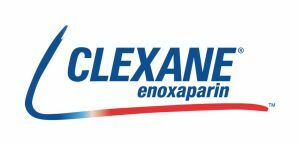 Enoxaparin sodium is an anticoagulant and is a low molecular weight heparin preparation.
Enoxaparin sodium is an anticoagulant and is a low molecular weight heparin preparation.
The substance has a high antiaggregant activity, blocks thrombokinase, prevents the formation of thrombi, has anti-inflammatory effect.
Contents
- Pharmaceuticals
- Scope
- Absolute and relative contraindications
- Medications prescribed for specific categories of citizens
- Adverse reactions
- Pharmacological compatibility
- Dosage and caution regimen
- Medications containing substance
- Opinion of doctors and patients
Pharmaceuticals
The active substance is rapidly absorbed by subcutaneous injection. The maximum concentration of the active principle in the blood is observed 3-5 hours after the injection. It is excreted by the kidneys in an unchanged form.
The elimination half-life is 4 hours. In patients with impaired renal function, elderly and obese people, this time increases and varies from 5 to 7 hours.
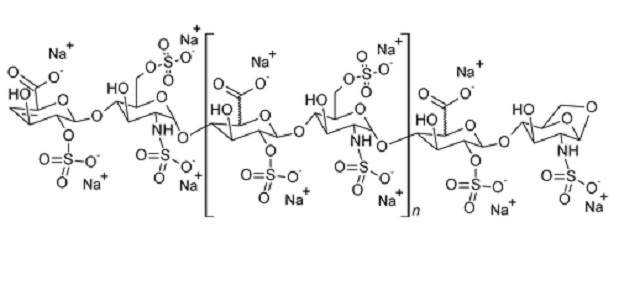
Formula of substance Enoxaparin sodium
Scope
Sodium enoxaparin is prescribed for the prevention of: 
- of venous thrombosis and clotting of blood clots during surgical interventions, including in lying patients;
- coagulation in the system of artificial circulation in hemodialysis.
And also it is prescribed for therapy:
- deep vein thrombosis, both with acute clotting of blood vessels with a thrombus, and without it;
- small-focal myocardial infarction and unstable angina( in combination with aspirin).
Absolute and relative contraindications
Absolute contraindications to the prescription of drugs based on the substance are the following:
- individual intolerance;
- threat of miscarriage;
- hypertensive intracerebral hemorrhage;
- cerebral aneurysm and aortic dissection( excluding surgical intervention);
- severe form of thrombocytopenia, provoked by heparin or enoxaparin;
- uncontrolled bleeding.
The following conditions are relative contraindications for use:
- bleeding disorder( clotting inhibition, hemophilia, thrombocytopenia, von Willebrand disease);
- severe arteritis;
- erosive and ulcerative diseases of the digestive system;
- recent ischemic stroke, neurologic or ocular surgery;
- uncontrolled severe arterial hypertension;
- diabetes mellitus;
- retinal hemorrhage;
- diabetic retinopathy;
- recent delivery;
- recent lumbar puncture;
- Spinal or epidural anesthesia due to risk of hematoma;
- inflammation of the membranes of the heart of bacterial etiology;
- renal and hepatic insufficiency;
- intrauterine device;
- serious injury( especially intracranial);
- extensive open wounds;
- concurrent administration of medicines affecting the hemostasis system.
Prescribing medicines to special categories of citizens
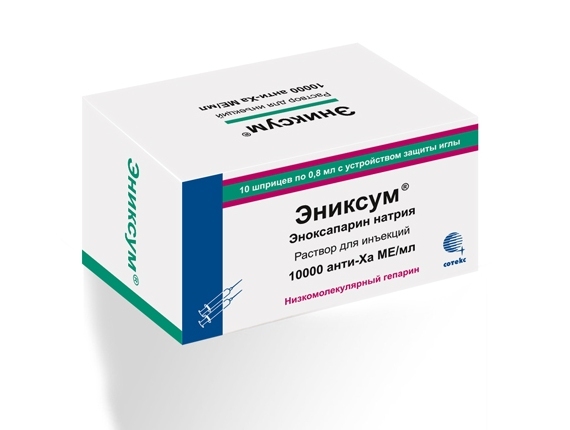 Because of the lack of clinical data, the drug can not be prescribed to patients under the age of 18 years.
Because of the lack of clinical data, the drug can not be prescribed to patients under the age of 18 years.
When conducting clinical trials in pregnant animals, there was no adverse effect on the offspring. And, nevertheless, the drug in women should be prescribed with caution and only if the benefit to the mother exceeds the possible risk for the child.
Do not prescribe the drug to pregnant women who have an artificial valve implanted in the heart, since a lethal outcome is possible.
For the period of therapy it is worthwhile to transfer the child to the adaptation mixture.
Adverse reactions
The following adverse reactions may occur with treatment:
- thrombocytopenia( asymptomatic, immuno-allergic);
- spontaneous spinal epidural hematoma, which can provoke temporary or permanent paralysis;
- increase in the concentration of hepatic enzymes;
- bleeding;
- is an allergy.
At the injection site, the following can be observed:
- inflammation;
- hemorrhage;
- pain;
- necrosis.
Pharmacological compatibility
The drug should not be mixed in the same syringe with other medicines.
The drug should not be prescribed with other agents that affect hemostasis: vitamin K antagonists, thrombolytic agents, NSAIDs( with the exception of aspirin);dextran -40, etc.
Dosage and caution regimen
During the administration of the drug, the patient should be in a horizontal position. Injection is done subcutaneously alternately in the anterior and posterolateral area of the abdominal wall at the level of the navel.
In order to prevent venous thrombosis and blockage of blood vessels, the first dose of the drug is administered 2 hours before the surgery, then 20 mg once a day for a week.
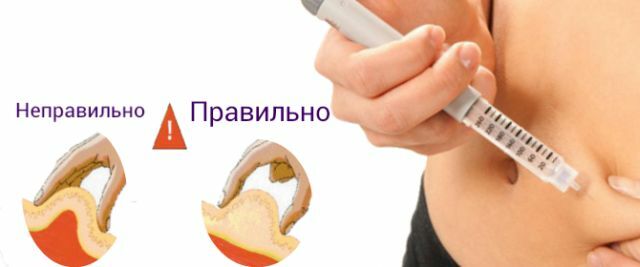
If the risk is too high, the dosage of the drug is doubled, the first injection is done 12 hours before the operation. The course of treatment is 10 days.
In order to prevent coagulation in blood purification using the "artificial kidney" device, the drug in a dosage of 0.5-1 mg / kg leads to the arterial highway at the beginning of hemodialysis, which lasts 4 hours.
In combination with aspirin, the drug is included in the scheme of therapy of unstable angina and small focal infarction. The dosage in such patients is 1 mg / kg, the drug is injected every 12 hours before the normalization of the condition, usually for 3-8 days.
When bleeding occurs, bleeding occurs. In this case, the patient is slowly introduced into the vein of protamine sulfate.
The drug can not be administered intramuscularly, only subcutaneously and intravenously during hemodialysis.
In patients with thrombocytopenia provoked by heparin, enoxaparin injections are performed in exceptional cases, since there is a high probability of developing immunoallergic thrombocytopenia, which may appear on the 5th-24th day after initiation of treatment.
The risk of thrombocytopenia provoked by heparin may persist for several more years.
To reduce the risk of developing a spinal cord hematoma, the drug should be administered at a dosage of 40 mg or less, it is not possible to prescribe in parallel other drugs that affect hemostasis and use penetrating epidural catheters. The risk of hemorrhage increases with repeated lumbar puncture.
With the introduction of the drug on the background of anesthesia you need to constantly monitor the patient's well-being. When detecting such signs of spinal cord hematoma, as painful sensations in the back, violations of the bladder and digestive organs, sensory and motor functions, including numbness and weakness in the legs, it is necessary to conduct urgent diagnostics and treatment, possibly spinal decompression.
When developing an acute infection to prevent drug use, it is justified if the patient is at a risk for developing venous thrombosis and has the following:
- age over 75 years;
- oncology;
- thrombosis and thromboembolism in history;
- excess weight;
- reception of hormonal preparations;
- chronic cardiac and respiratory failure.
Medications containing substance
Today the following preparations can be found on sale with active substance, in which is sodium enoxaparin:
- Anfiber;
- Hemapaksan;
- Clexane.
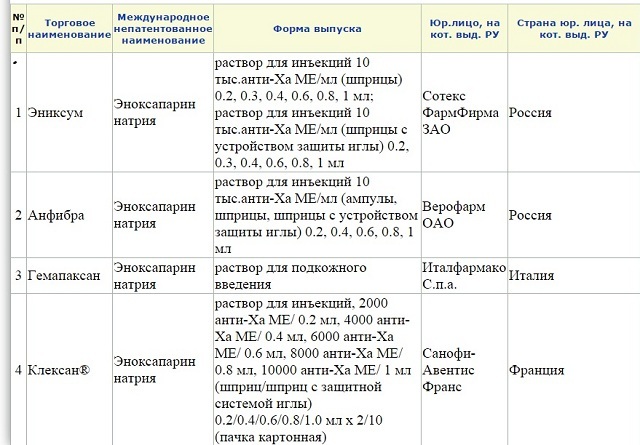
Opinion of doctors and patients
Reviews of patients and specialists who practice the use of enoxaparin sodium in their medical practice.
At the beginning of pregnancy I had an elevated level of D-dimer, the doctor appointed Clexan. Sell the drug strictly according to the prescription in the package of 1-2 syringes.
Injection is done in the abdomen, retreating from the navel in different directions for 2 fingers. The first time it was painful, and a hematoma formed, but the tests after the treatment were normal.
Maria
You can not prescribe the drug yourself, as there is a high risk of bleeding. It should be remembered that low molecular weight heparins are not interchangeable and should be prescribed strictly according to the instructions.
In order to make an injection, it is necessary to pinch the skin with a thumb and forefinger and do not unclamp the skin until the end of the procedure. The needle in the skin fold should be inserted perpendicularly to the body of the patient for the entire length. After the administration of the medicine, the injection site can not be massaged.
Anatoly Alexeevich surgeon, experience 21 years old
Injection at a temperature not exceeding 25 degrees is stored, not allowing them to freeze.
